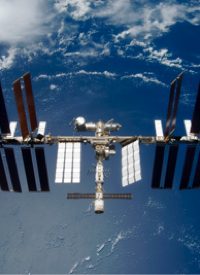
With NASA Administrator Charles Bolden taking tentative steps toward more free market possibilities for America’s space program—and even mentioning the once-unspeakable topic of “space tourism”—a clown from Canada is already orbiting the Earth.
An Associated Press story entitled “Canadian circus billionaire heads to space station” notes that "a Canadian circus tycoon, an American astronaut and a Russian cosmonaut blasted off in a spacecraft from the Kazakh steppe Wednesday on a journey to the International Space Station." The AP account continues:
A Canadian circus tycoon, an American astronaut and a Russian cosmonaut blasted off in a spacecraft from the Kazakh steppe Wednesday on a journey to the International Space Station.
Minutes after lifting off from the Baikonur launch facility, the Soyuz capsule shed its rocket stages and entered orbit. On board were Cirque du Soleil founder and space tourist Guy Laliberte along with crew members Jeffrey Williams and Maxim Surayev.
Friends and family on the ground cheered and hugged one another when an announcement that the ship was in orbit came over the loudspeaker. They chanted "Guy! Guy!" and broke out singing Elton John’s "Rocket Man."
Laliberte, an experienced stilt-walker and fire-breather dubbed the first clown in space, had donned a bulbous red nose and blew kisses to supporters before the launch. He has paid $35 million for the trip he plans to use to publicize the world’s growing shortage of clean water.
Despite a ‘lead’ which sounds like a bad joke (“A Canadian clown, an American astronaut and a Russian cosmonaut float into a space station…”), the flight of Guy Laliberte is the latest in a series of high-profile occasions of “space tourism.” The first official “space tourist” was Dennis Tito, who visited the International Space Station for seven days, beginning April 28, 2001. Laliberte is the seventh “space tourist” and the first Canadian to join the ranks of this most exclusive club. (Four of the “space tourists” have been Americans; the other two were from South Africa and the Great Britain.)
The $35 million price tag confirms what Laliberte’s six predecessors have already established: private trips to space are not cheap. Still, with a net worth estimated at approximately $2.5 billion, Laliberte clearly determined the ride to the ISS was worth the investment.
As new companies, including SpaceX, provide less expensive alternatives for flights to Low Earth Orbit, the phenomena of “space tourism” can be expected to expand and to play its own role in bringing down the cost of space travel. A significant reason for the profound “sticker shock” associated with space flight is the unit cost of spacecraft; given normal market forces, expanding demand should gradually bring down the cost per flight.
Who knows? What seems in 2009 like an unimaginably extravagant adventure into space may one day seem no more extraordinary than terrestrial “adventure tourism” to the high Arctic or Antarctica.
Photo of International Space Station: NASA



